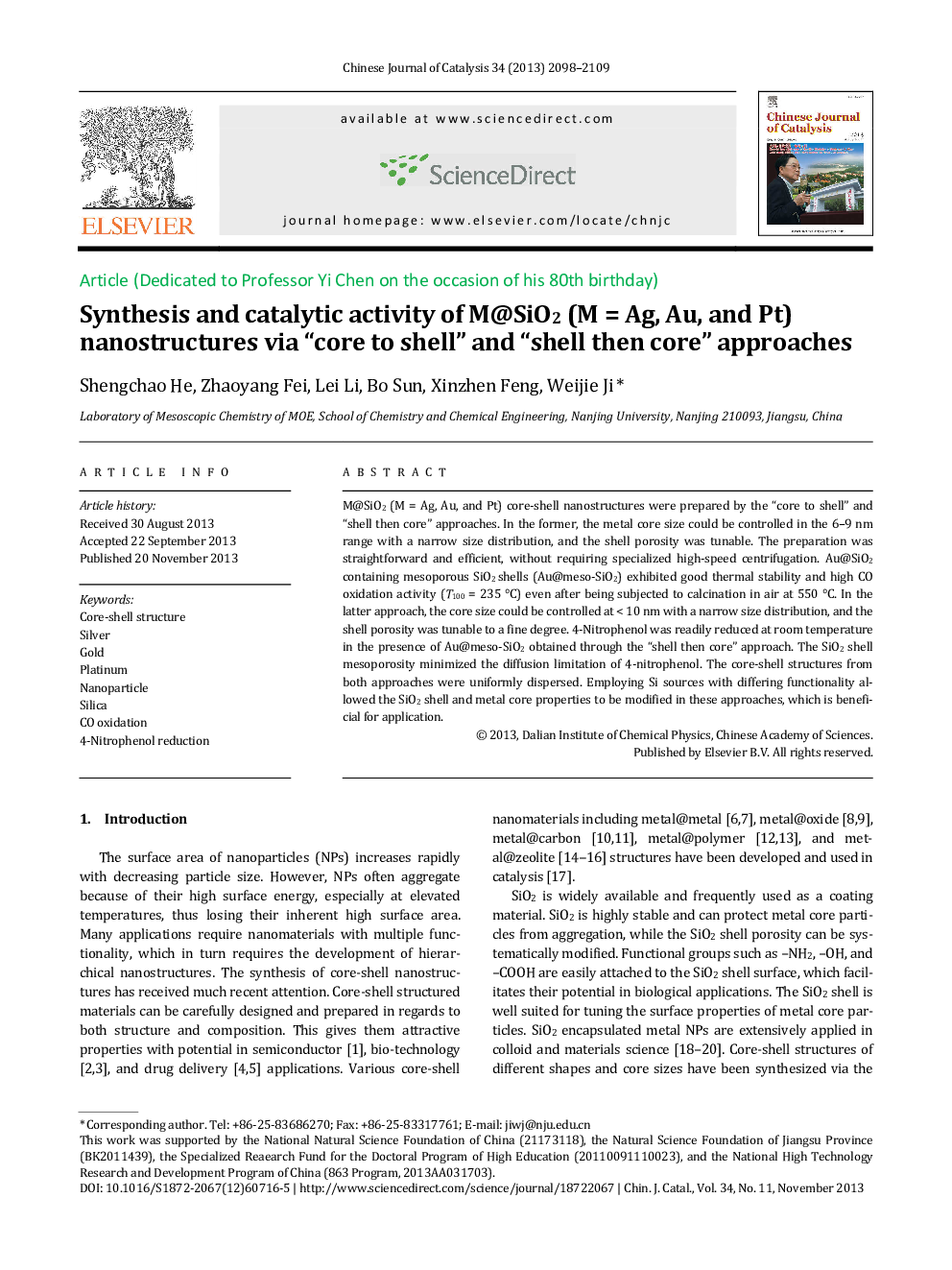| کد مقاله | کد نشریه | سال انتشار | مقاله انگلیسی | نسخه تمام متن |
|---|---|---|---|---|
| 59915 | 1419449 | 2013 | 12 صفحه PDF | دانلود رایگان |

M@SiO2 (M = Ag, Au, and Pt) core-shell nanostructures were prepared by the “core to shell” and “shell then core” approaches. In the former, the metal core size could be controlled in the 6–9 nm range with a narrow size distribution, and the shell porosity was tunable. The preparation was straightforward and efficient, without requiring specialized high-speed centrifugation. Au@SiO2 containing mesoporous SiO2 shells (Au@meso-SiO2) exhibited good thermal stability and high CO oxidation activity (T100 = 235 °C) even after being subjected to calcination in air at 550 °C. In the latter approach, the core size could be controlled at < 10 nm with a narrow size distribution, and the shell porosity was tunable to a fine degree. 4-Nitrophenol was readily reduced at room temperature in the presence of Au@meso-SiO2 obtained through the “shell then core” approach. The SiO2 shell mesoporosity minimized the diffusion limitation of 4-nitrophenol. The core-shell structures from both approaches were uniformly dispersed. Employing Si sources with differing functionality allowed the SiO2 shell and metal core properties to be modified in these approaches, which is beneficial for application.
“Core to shell” and “shell then core” approaches were used to prepare 6–9 nm diameter M@SiO2 (M = Ag, Au and Pt) with tunable shell porosity for catalytic reactions.Figure optionsDownload as PowerPoint slide
Journal: Chinese Journal of Catalysis - Volume 34, Issue 11, November 2013, Pages 2098–2109